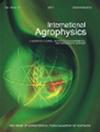利用机器学习从全局数据集中估计经验渗透模型的参数
IF 1.7
4区 农林科学
Q2 AGRONOMY
引用次数: 2
摘要
入渗是水文循环的关键过程。渗透估算在洪水和干旱管理、灌溉和排水系统设计、地下水补给评估、地下水流以及污染物迁移调查和建模中至关重要。已经提出了大量的方程来模拟和预测渗透(Mishra等人,2003)。使用了基于物理学的方程,例如:Brutsaert(1977)、Green和Ampt(1911)、Kutílek和Krejča(1987)、Philip(1957)、Swartzendruber(1987),以及经验方程,例如Kostiakov(1932)、Horton(1940)、Holtan(1961)、Mezenev(1948)。渗透测量既耗时又劳动密集,因此对于大型项目来说不切实际。这些项目受益于预测模型,该模型将渗透方程的参数与容易获得或更容易获得的特定地点数据联系起来。根据土壤和景观特性估计渗透方程的参数,导致了特殊类型的土壤传递函数的发展(Pachepsky和Rawls,2003)。使用基本土壤特性估算了各种渗透方程的参数,©2021波兰科学院土壤物理研究所本文章由计算机程序翻译,如有差异,请以英文原文为准。
Estimating parameters of empirical infiltration models from the global dataset using machine learning
Infiltration is the key process of the hydrological cycle. Infiltration estimates are of paramount importance in flood and drought management, irrigation and drainage system design, groundwater recharge assessment, subsurface flow, and contaminant transport investigation and modelling. A large number of equations have been proposed to simulate and predict infiltration (Mishra et al., 2003). Both physics-based equations, e.g.: Brutsaert (1977), Green and Ampt (1911), Kutílek and Krejča (1987), Philip (1957), Swartzendruber (1987), and empirical equations, e.g. Kostiakov (1932), Horton (1940), Holtan (1961), Mezencev (1948) are in use. Infiltration measurements are both time consuming and labour-intensive and are therefore impractical for largescale projects. Such projects benefit from predictive models that relate the parameters of the infiltration equations to the readily available or more easily attainable site-specific data. Estimating the parameters of the infiltration equations from their soil and landscape properties has led to the development of special types of pedotransfer function (Pachepsky and Rawls, 2003). The parameters of various infiltration equations have been estimated using basic soil properties, © 2021 Institute of Agrophysics, Polish Academy of Sciences
求助全文
通过发布文献求助,成功后即可免费获取论文全文。
去求助
来源期刊

International Agrophysics
农林科学-农艺学
CiteScore
3.60
自引率
9.10%
发文量
27
审稿时长
3 months
期刊介绍:
The journal is focused on the soil-plant-atmosphere system. The journal publishes original research and review papers on any subject regarding soil, plant and atmosphere and the interface in between. Manuscripts on postharvest processing and quality of crops are also welcomed.
Particularly the journal is focused on the following areas:
implications of agricultural land use, soil management and climate change on production of biomass and renewable energy, soil structure, cycling of carbon, water, heat and nutrients, biota, greenhouse gases and environment,
soil-plant-atmosphere continuum and ways of its regulation to increase efficiency of water, energy and chemicals in agriculture,
postharvest management and processing of agricultural and horticultural products in relation to food quality and safety,
mathematical modeling of physical processes affecting environment quality, plant production and postharvest processing,
advances in sensors and communication devices to measure and collect information about physical conditions in agricultural and natural environments.
Papers accepted in the International Agrophysics should reveal substantial novelty and include thoughtful physical, biological and chemical interpretation and accurate description of the methods used.
All manuscripts are initially checked on topic suitability and linguistic quality.
 求助内容:
求助内容: 应助结果提醒方式:
应助结果提醒方式:


